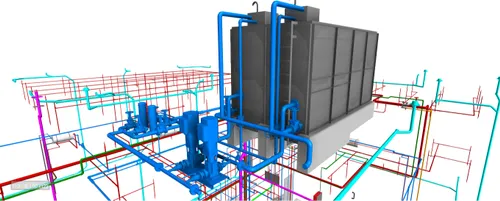How Plumbing BIM Drafting Saves Time & Reduces Costs in Construction

Strong 8k brings an ultra-HD IPTV experience to your living room and your pocket.
The construction landscape is evolving rapidly, driven by the need for greater accuracy, faster delivery, and tighter budget control. Among the many innovations transforming how buildings are planned and built, Plumbing BIM Drafting stands out as a game-changer. By combining intelligent 3D modeling with real-world data, BIM (Building Information Modeling) significantly enhances the design, coordination, and execution of plumbing systems. Its impact on project timelines and cost efficiency is both measurable and profound.
Let’s explore how Plumbing BIM Drafting not only streamlines workflows but also leads to smarter spending and fewer surprises during construction.
1. Early Clash Detection and Coordination
A significant portion of delays and cost overruns in construction stems from coordination errors, especially when plumbing systems conflict with HVAC, structural beams, or electrical conduits. Plumbing BIM Drafting helps identify these conflicts early through clash detection tools, allowing for resolution in the virtual model rather than on-site.
This proactive approach minimizes rework, saves labor costs, and ensures smoother project execution.
2. Enhanced Multidisciplinary Collaboration
BIM enables all stakeholders—architects, MEP engineers, contractors, and fabricators—to work from a single source of truth. Plumbing systems are integrated into a shared digital environment where changes are updated in real time. This fosters a collaborative atmosphere, reducing communication gaps and ensuring everyone is working from the latest version.
The result is a more agile workflow and fewer coordination meetings, which translate into saved time and reduced overhead.
3. Data-Driven Cost Estimation and Resource Planning
One of BIM’s most practical features is its ability to automatically generate accurate material takeoffs and cost estimates. Plumbing BIM models store detailed information about pipe types, fittings, valves, and equipment, making it easy to quantify materials precisely.
This supports better budgeting, reduces procurement errors, and helps avoid costly overordering or shortages on-site.
4. Streamlined Fabrication and Installation
Detailed BIM models can be used to prefabricate plumbing assemblies off-site, saving time during actual construction. These prefabricated sections arrive ready to install, which speeds up installation, improves safety, and enhances quality control.
In turn, this reduces labor hours, minimizes waste, and helps keep projects on track.
5. Fewer Change Orders and RFIs
Because Plumbing BIM Drafting identifies design issues before construction begins, there’s less need for change orders and requests for information (RFIs) during the build phase. This leads to a more stable and predictable schedule and a significant reduction in unexpected costs.
6. Lifecycle Benefits and Facility Management
BIM models don’t just serve the construction team—they become valuable assets for building owners and facility managers. The detailed plumbing layouts and system data contained in the BIM file make it easier to plan maintenance, repairs, and future renovations.
This long-term visibility reduces operational costs and improves asset management throughout the building’s lifecycle.
7. Sustainability and Waste Reduction
With precise modeling and pre-construction planning, Plumbing BIM Drafting also contributes to sustainability goals. It minimizes material waste, prevents over-ordering, and reduces energy consumption during construction.
Using BIM supports green building certifications like LEED and aligns with environmentally responsible practices in the AEC industry.
Plumbing BIM Drafting is redefining how construction teams approach plumbing system design and coordination. By leveraging intelligent 3D models, clash detection, real-time collaboration, and precise cost estimation, BIM reduces inefficiencies that commonly plague traditional drafting methods. From minimizing on-site errors to enabling prefabrication and supporting long-term facility management, the benefits of BIM are clear and measurable.
Moreover, the integration of Plumbing BIM into the construction workflow not only speeds up project delivery but also enhances the overall quality and sustainability of a build. It allows stakeholders to make informed decisions, optimize resource usage, and significantly reduce rework, saving both time and money across every phase of the project lifecycle.
At Offshore Outsourcing India, we specialize in providing comprehensive Plumbing BIM Drafting Services tailored to meet the unique needs of architects, engineers, and contractors worldwide. With a skilled team, advanced tools, and a client-centric approach, we help our partners achieve greater accuracy, efficiency, and cost-effectiveness in every project.
Note: IndiBlogHub features both user-submitted and editorial content. We do not verify third-party contributions. Read our Disclaimer and Privacy Policyfor details.


